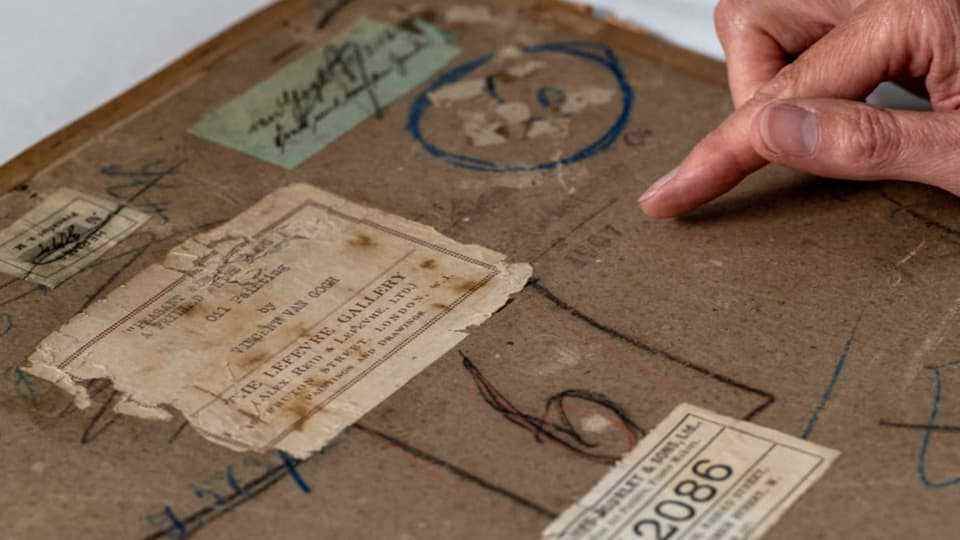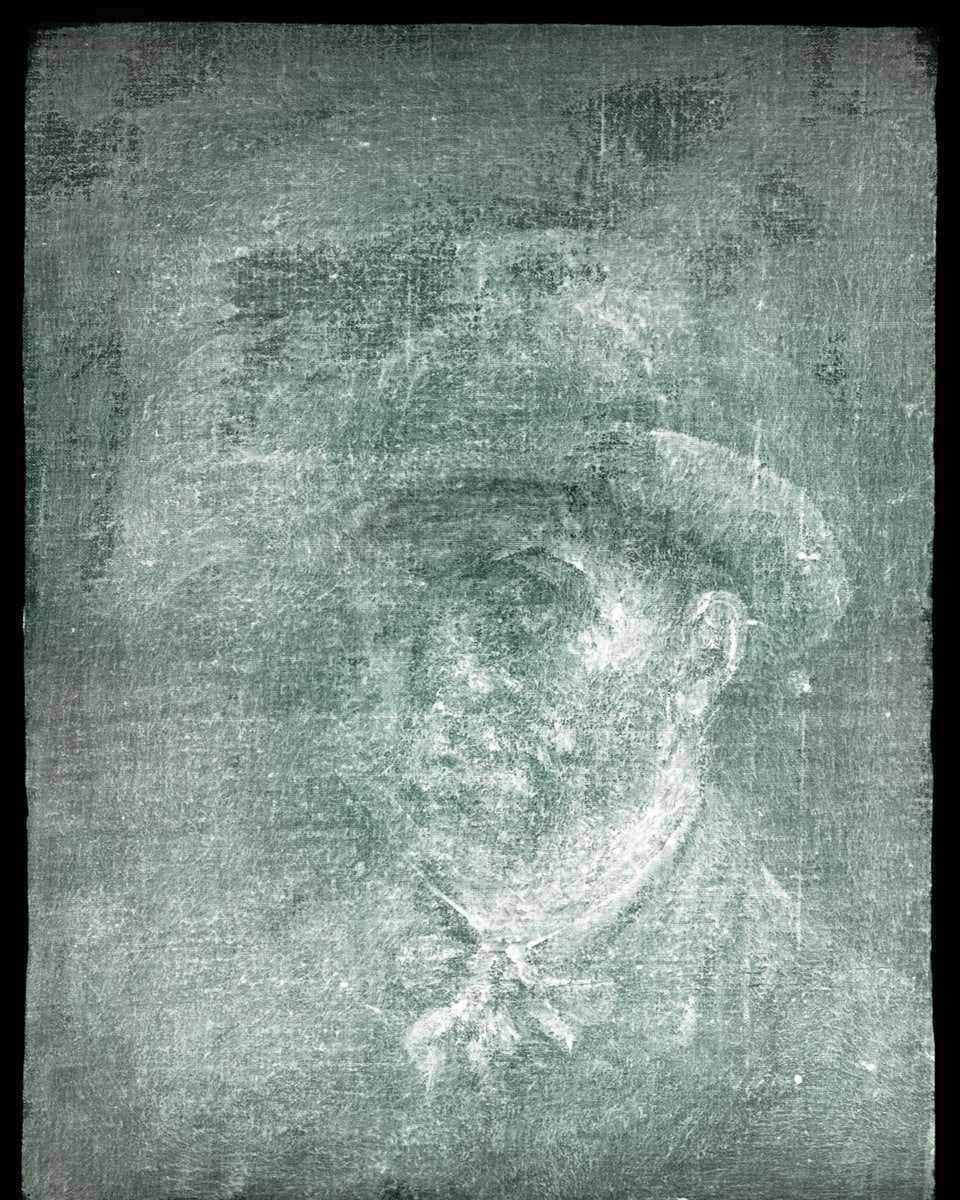contents
It was a routine treatment, now the Scottish National Gallery is celebrating a sensation: On Thursday, the museum discovered a sketch that very likely came from Vincent van Gogh. The self-portrait could close a gap in the painter’s artistic career.
A bearded man, with a loosely knotted scarf and a wide-brimmed hat, the right side of his face in shadow: a sketch causes a stir in the art world. Because the gentleman who looks so penetratingly at the viewer is in all probability Vincent van Gogh (1853-1890).
Legend:
Vincent Van Gogh’s self-portrait is hidden behind the work “Head of a Peasant Woman with a White Cap (1885)” (left).
Reuters
The world-famous Dutch painter probably drew himself. “Yes, you read that right,” said the Scottish National Gallery in a statement on Thursday. “We have almost certainly discovered a previously unknown self-portrait by Vincent van Gogh.”
The find came as a complete surprise
The drawing came to light when Van Gogh’s Head of a Peasant Woman in a White Cap (1885) was being X-rayed in preparation for an exhibition in Edinburgh. The museum emphasized that this treatment was purely routine. “The find was a complete surprise.”
The self-portrait is on the back of the canvas. It was covered with several layers of glue and cardboard, which were probably installed around 1905 for an exhibition.

Legend:
The back of the painting looks unspectacular: lots of labels, lots of scrawling. But it should be under there.
Reuters
It is well known that Van Gogh repeatedly used the back of paintings for new sketches and pictures – the artist often had little money and had to save. “That’s why pictures keep appearing, including self-portraits,” says Cologne art historian and journalist Stefan Koldehoff of the German Press Agency.
Not 100 percent sure yet
The left ear, which the painter cut off in 1888, is clearly visible. The drawing must therefore have been created beforehand. The museum said it was probably an early work and one of the first attempts at self-painting. The National Gallery does not want to be 100 percent sure that it is a real Van Gogh.

Legend:
Did he paint himself here, Vincent van Gogh? (X-ray)
Reuters
International experts were consulted during the investigation. But: “We can currently only work with the X-ray image. We hope that if we manage to remove the glue and cardboard to reveal the self-portrait, we can be absolutely certain.” This work should be difficult – not that the painting on the other side is damaged.
Van Gogh wasn’t the only one to paint the back
The Dutchman was not the only painter who also used the back of the canvas. Ernst Ludwig Kirchner (1880-1938), the central figure in the “Brücke” group of artists, often worked in this way. From a scientific point of view, such sketches and rejected works are considered to be particularly revealing.
Art historians are also hoping for clues in this case. Van Gogh was particularly keen to experiment during his Paris years from 1886 to 1888, says Van Gogh biographer Koldehoff. Contrary to what is often portrayed, he was by no means a lone wolf, but made friends with impressionists in Paris.
“His pictures themselves became more impressionistic, brighter, more colorful,” says the expert. «If this possible self-portrait […] from this period, it could also show how Van Gogh learned. But that’s speculation as long as we don’t see the picture in the original and in color.”
